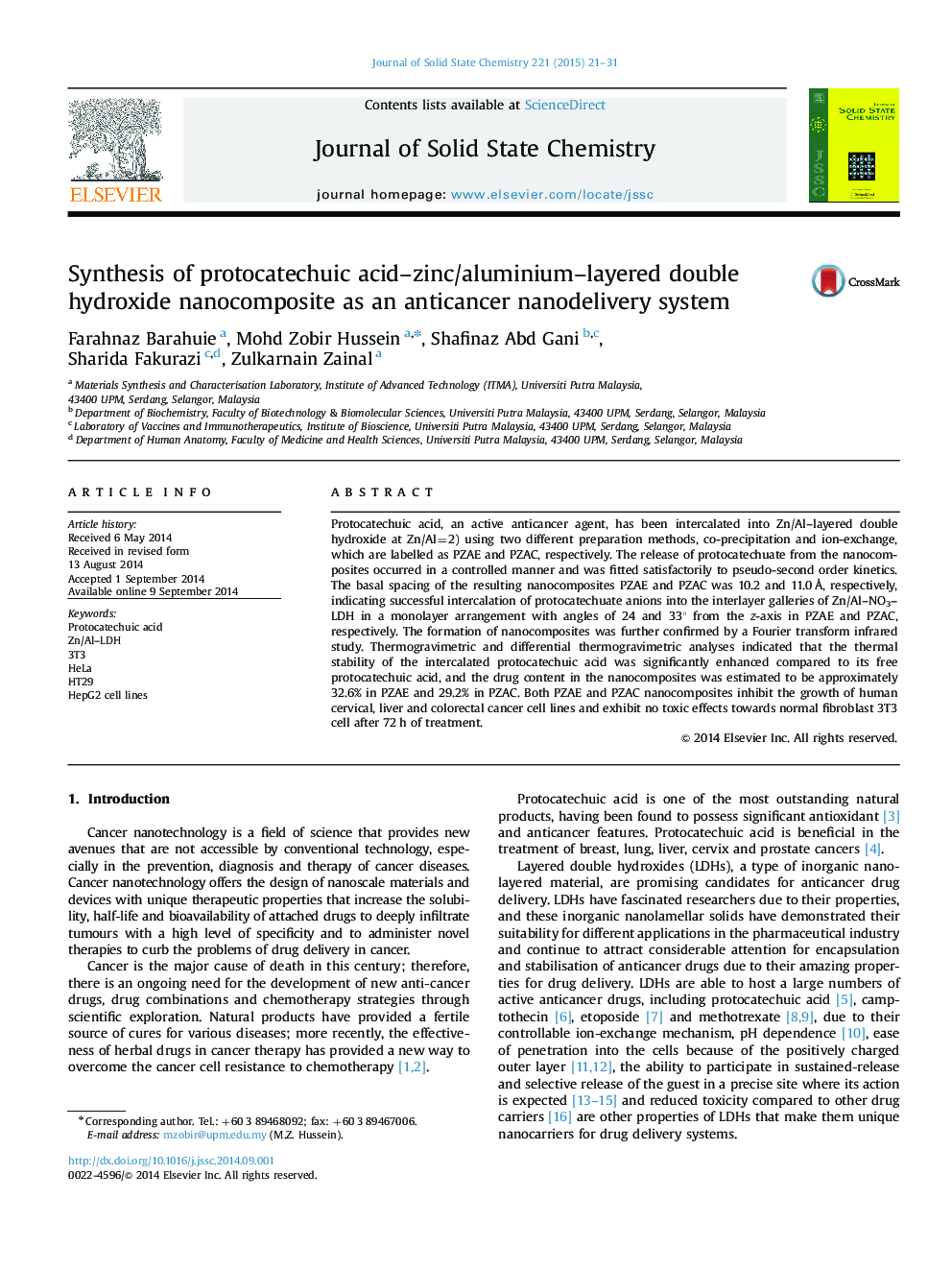| کد مقاله | کد نشریه | سال انتشار | مقاله انگلیسی | نسخه تمام متن |
|---|---|---|---|---|
| 1329599 | 1500095 | 2015 | 11 صفحه PDF | دانلود رایگان |
• Two methods gave nanocomposites with slightly different physico-chemical properties.
• PZAE and PZAC have the potential to be used as a controlled release formulation.
• The thermal stability of PA is markedly enhanced upon the intercalation process.
• Higher cancer cell growth inhibition for PZAE and PZAC nanocomposites than for PA.
Protocatechuic acid, an active anticancer agent, has been intercalated into Zn/Al–layered double hydroxide at Zn/Al=2) using two different preparation methods, co-precipitation and ion-exchange, which are labelled as PZAE and PZAC, respectively. The release of protocatechuate from the nanocomposites occurred in a controlled manner and was fitted satisfactorily to pseudo-second order kinetics. The basal spacing of the resulting nanocomposites PZAE and PZAC was 10.2 and 11.0 Å, respectively, indicating successful intercalation of protocatechuate anions into the interlayer galleries of Zn/Al–NO3–LDH in a monolayer arrangement with angles of 24 and 33° from the z-axis in PZAE and PZAC, respectively. The formation of nanocomposites was further confirmed by a Fourier transform infrared study. Thermogravimetric and differential thermogravimetric analyses indicated that the thermal stability of the intercalated protocatechuic acid was significantly enhanced compared to its free protocatechuic acid, and the drug content in the nanocomposites was estimated to be approximately 32.6% in PZAE and 29.2% in PZAC. Both PZAE and PZAC nanocomposites inhibit the growth of human cervical, liver and colorectal cancer cell lines and exhibit no toxic effects towards normal fibroblast 3T3 cell after 72 h of treatment.
Protocatechuate anions were arranged in monolayer mode with the angle of 24° for PZAE and 33° for PZAC from Z axis to maximize interaction between carboxylate groups and brucite-like layers.Figure optionsDownload as PowerPoint slide
Journal: Journal of Solid State Chemistry - Volume 221, January 2015, Pages 21–31
